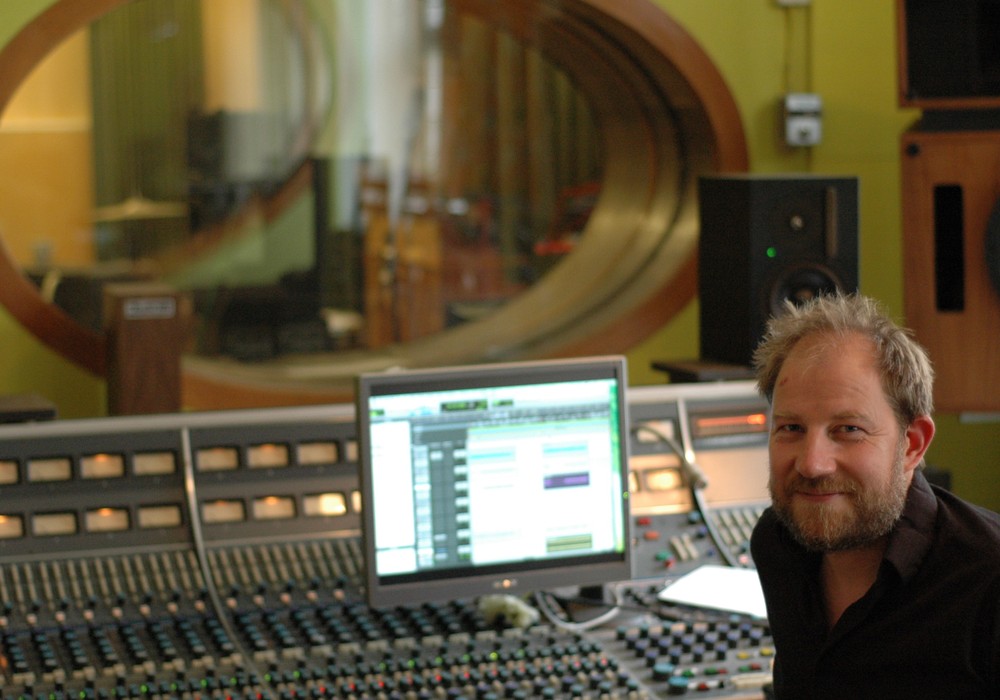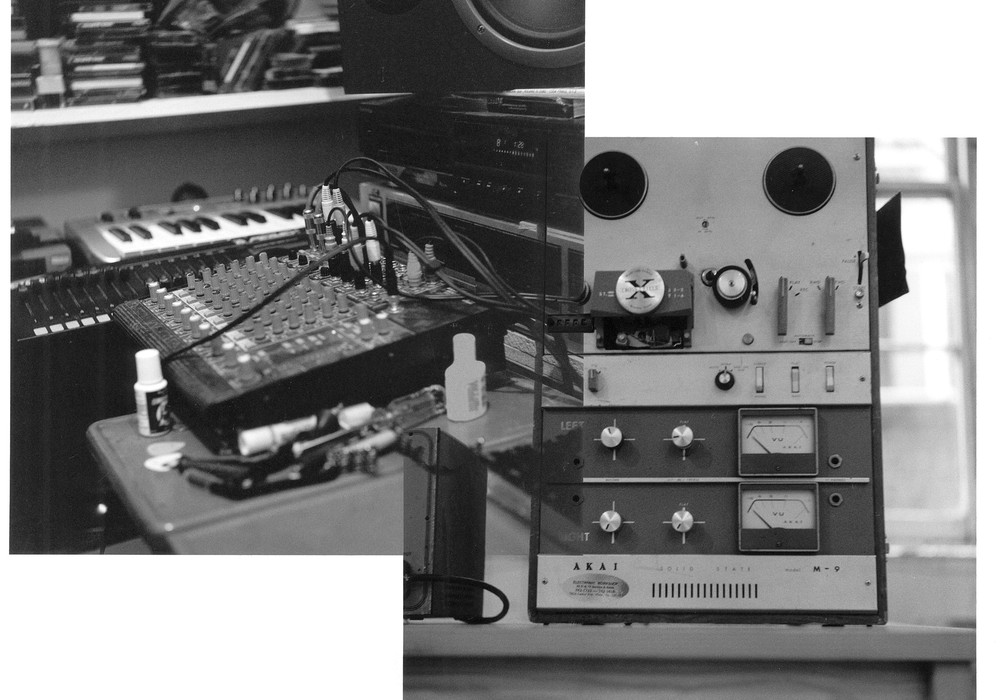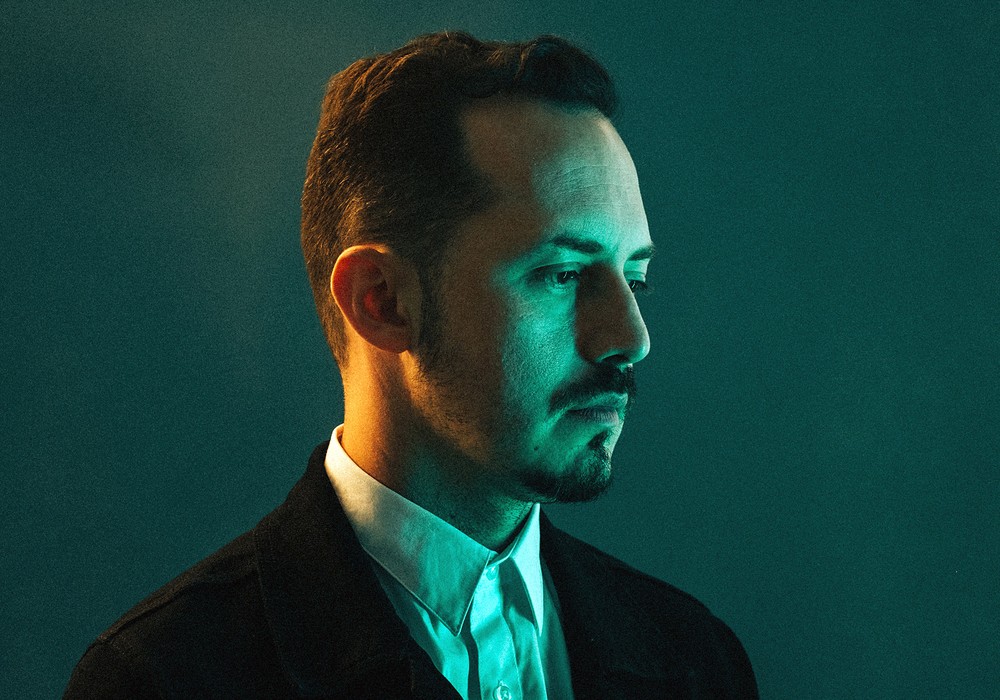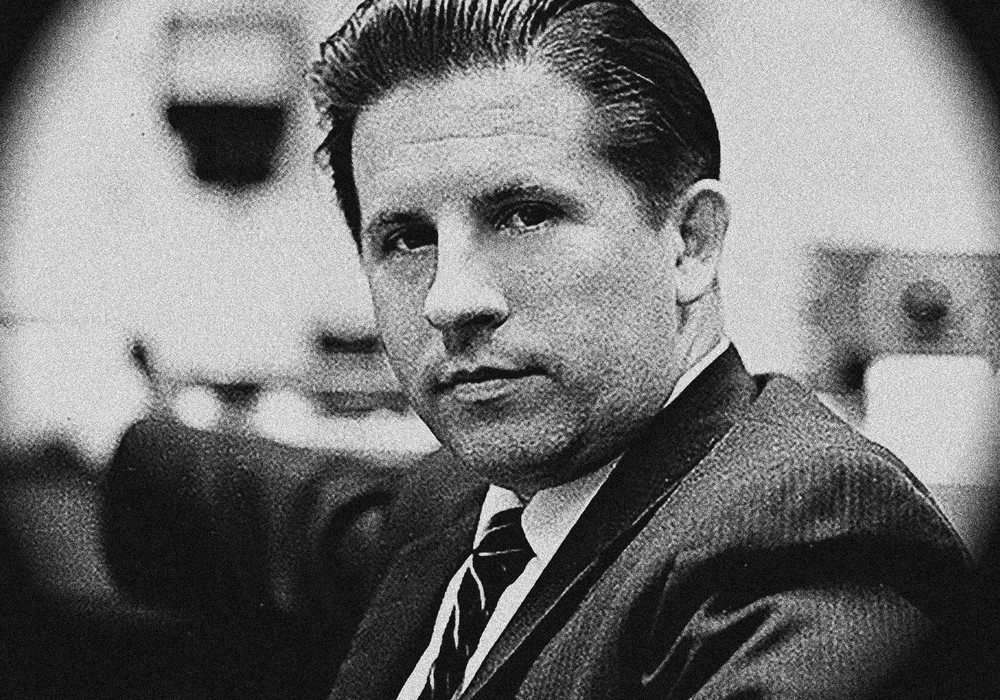Known as the "Father of Audio" in Arizona, Jack Miller has had a long history in the recording world that including a mid-'50's mobile recording gig in Chicago, some hit-making, late-'50s sessions in Phoenix with Duane Eddy and Lee Hazlewood and a stint in Hollywood with RCA where he worked with artists like The Rolling Stones, Anthony Newley, Herman's Hermits and The Monkees. Jack has been busy ever since, becoming a partner in Arizona's legendary Audio Recorders in the '60s and forming Jack Miller Productions in 1978. Now in his 70s, Jack is still recording, working extensively with Canyon Records on their catalog of Native American music.
When you moved to Phoenix from Chicago didn't you get a music store job?
I worked at Dawson Music for two years. It was a record store that sold and moved pianos. After that I went to Ramsey's — a TV store that fixed TVs and radios and appliances and had a record store up front. I worked in the repair shop until the engineer for the recording studio (in the same building) left, and I went to work in the studio. That was Ramsey's Recording [owned by Floyd Ramsey]. That's basically where Duane [Eddy] started.
Were there other studios in Phoenix at that time?
There were two studios in Phoenix. There was Ramsey's and Arizona Recording Productions — [owned by] Ray Boley. That's kind of unique because I'm in the Canyon Records building, which used to be owned by Ray.
Sanford Clark's "The Fool" had already been cut at Ramsey's right?
"The Fool" was cut and released in '56. [written and produced by Lee Hazlewood]
Did you work on that?
No. They were still watching it climb the Billboard charts. I was there when finally they found out that it was going to be a smash, and Dot Records took it over. That started the ball rolling, because money came in and we started doing more recording. Up until then we weren't doing that much.
What was the purpose of a studio like that before?
They recorded local bands and things like that. They didn't do any radio commercials or that kind of stuff. Floyd had two labels at the time. One was Old Timer Records and the other one was Liberty Bell. The Old Timer label had been a success [for] square dancing records. When I was selling records in Chicago that was my favorite label, because they were so precise and so wonderful. I was thrilled to be a part of that.
With the calls?
The calls — right. Do it without the call and then overdub the call — they had two sides of the record. Ramco Records was started later.
Did you work with Lee Hazlewood on the first Duane Eddy stuff?
Oh yeah. He didn't show up until after I got there. He'd played sideman on sessions and things like that. Lee brought Duane to us. Duane had actually recorded a couple of things at KTYL radio station and was unhappy with the sound. Lee was the one that went and got the tank to put echo on the recordings. That happened before I got there.
This famous reverb tank — I researched it and found three different numbers as to its size!
Two thousand one hundred gallons is the correct number. It was round, tall, cylindrical. It had a port on the side, so they laid it down on it's back so the port was sticking up. It looked like a submarine. It was a Lee Hazlewood thing — he wanted that for vocals. He wanted a nice, rich reverb on Sanford Clark's "The Fool," and he ended up with a slap back [tape] echo because that's all they could produce. They walked around these yards and yelled into tanks. They told me that the guy that was walking with them said, "Are you guys crazy?"
Just a speaker and a mic in there?
Yes. After I got there I didn't like it — it was ringy. One day I took the lid off and I heard it playing and it was real echo-ey. I said, "If the mic was out here it would sound better." So we started tweaking with it and built a box that sat outside the tank with the mic mounted in it, listening to the hole. The speaker was at one end and things are bouncing around in there. When the mic goes down in the tank, then you get standing waves and things start cancelling themselves out. It really did help it a lot, and about that time is when we started working with Duane. Duane and the tank — that did create a sound.
Were you putting that on guitar tracks and stuff?
We were putting it on anything we could put it on. We overused it to the point that it is sickening, actually. Floyd kept saying, "It's the Phoenix sound. Nobody else has this, so let's make sure we get it on there and get a lot of it." I didn't disagree with it at all, but nowadays I would turn that down a little bit so that the original [sound] is a little cleaner than it is. We didn't know anything at that time. I think that was a blessing because everything sounded kind of fresh and new. We had no idea where we were going.
Had records come out of that studio besides "The Fool" that had charted?
Yeah. We had a lot of hits. Dave Lowe's "So Young" did very well. We had Ted Newman's "Plaything." Skip & Flip's "It Was I" and "Cherry Pie" — I have a hard time remembering titles. I can remember the sessions, I can remember how we did it and I remember the microphones used, but ask me the titles and I can't tell you that. [laughs]
How busy was the studio then?
Back in '57, '58, '59 — we were doing six to ten sessions a day in one studio.
Multiple engineers?
No. I was working from 9 to 1 most days and rarely had any time off. In fact it cost me a marriage. It was that bad. What kind of gear was being used at
Ramsey's? Was it a homemade console?
No, we had an Altec radio board, which had four mic inputs — four big knobs across the front and a big meter in the center. It was a great sounding board — all tube. We actually looped it through a filter that could filter low and high-end cutoff on both ends...
The whole output of the board?
Yeah, and that went into a Pultec equalizer, which had bass and treble controls and you could select the frequencies. That went into a limiter built by an engineer out at KTYL FM — that was a terrible limiter. When the signal got too loud it would just limit, but only after it was loud for a half a second. But it really worked on Duane's guitar on those low notes. So we would feed through all that and into the mono tape recorder.
So you're blending mics together and through the signal path, and then going onto tape?
All live — mixing as you go. When you were done it was a master. Leader it, send it off and have it pressed. Later on, about the time we started doing Duane's The "Twangs" the "Thang" album (the one that has "Blueberry Hill" on it), we went to stereo and then we bought a 10-channel Collins TV board, which had "Studio A" and "Studio B" on one board. You could select either the outputs to go to Studio A's output or to Studio B's. We used that as our stereo mixer, so we didn't have any center — it either was left or right. Later I learned how to get a third mixer, and actually put it in on the busses of both of those so I could mix stuff in the center. That's when we started putting bass and vocals in the center and stuff like that.
Was that kind of crazy, having to completely pan things?
Well, yeah. That's where today's technology doesn't understand that day's technology. The microphones weren't dedicated. In other words, the guitar mic might get the guitar loudest, but it also was getting the drums and the rhythm guitar — it was getting everything else — so hard left on that and then hard right on another mic that's getting all those leakages starts to fill in the space. It didn't sound like hard left and hard right, because we didn't care about leakage. As long as the balance was right and the band's balancing all the time — you do one take, you play them back. The next take, everything was fixed. The musicians really did it all.
Were you moving mics around and baffling them off?
Very little of that. We got to a point where we knew what worked and what didn't. We had a baffle behind the drums, and that was about the only baffling we had. We had these baffles that hung on the wall that we could turn. One side was live, one side was dead. We could bounce stuff around. If the rhythm guitar player was [saying], "I can't hear the drums," like a mirror we bounced the drums towards him. That's how we did that.
I assume no one was on headphones.
We never had headphones. If we did overdubs, we overdubbed with a speaker. It's amazing that when everybody in the band knows what they're doing feel- wise, what they're hearing, they know exactly how it's being recorded because it doesn't change from time to time. They can anticipate what's going on.
What kind of tape deck were you using?
We started off with an Ampex 401. It was unique because the capstan pushed the tape through the heads — it didn't pull it through the heads. We had a lot of trouble with that because it had a regulator that kept the tape tension, even no matter what the hub size was. There were felt pads and things, and they caused a lot of problems with wow and flutter. That's how I got the job at Ramsey's — I told Floyd, "If you give me a job, I'll bring my 350 Ampex mono recorder with me." He gave me a about a 3-second pause and said, "You can start next week." Later he bought it from me. That's what we did Duane on. It was mono only. If we wanted to overdub, we'd have to play them on that 401 and record on the Ampex 350. That's how we did overdubs. Then we got an Ampex 350-2 — still not a 351. The 350-2 had two tracks so we could do stereo, but we couldn't overdub stereo at that time. So we bought the 3- track Ampex 300-3 that's sitting here. It allowed us to go from 2-track to 3-track, add a track if we wanted to and then back to the 2-track.
It gives you lots of possibilities.
Right. We could add stuff as we transferred over, still had a track to add another thing in, then we could bounce the whole thing down.
What about microphones?
We had two Neumann U47s, which is a very coveted microphone now. We used one of them on Duane's guitar and the other U47 was usually on the sax — we had some really crummy microphones other than those two good ones.
Did you wind up with those on the drums and stuff?
Yeah. We used an E-V [Electro-Voice] mic — a 666. Dale Blackwell worked at E-V at the time, and he sent me one. It was a decent broadcast mic for talking into, but we used it on drums as an overhead. We used an Altec "salt shaker" [633] for the bass drum. For upright bass, we stuck another E-V mic right in the F- hole and let it hang there. Buddy Wheeler's electric bass had a super tweeter built in it. When he hit the front edge of the notes [snaps] that's all it did — we actually mic'ed that. We didn't mic the low end at all — we just fed that in. We had about four gold American mics — really pretty microphones. We used them on the bass or rhythm guitar. We never worried too much about the drums or anything else, except that Lee wanted more zip from the snare, so we would stick another E-V microphone just facing up the bottom of the snare. That's when we had to go to a secondary mixer that we could EQ and do things with. McIntosh, who made the tube amps, made this great mixer with a really nice equalizer on it. I think the top of the equalizer was a shelf at 10 kHz and the bottom was a shelf at 100 Hz. We thought it was fancy.
There were no parametric EQs at this time, were there?
There was a thing called the Blonder Tongue [Audio Baton]. It was a 10-band equalizer unit that you could put on your home system. We actually used it to record with.
So eventually you ended up partnering up with Floyd and creating Audio Recorders?
After the success of all these things, the people involved got famous. Waylon Jennings went to RCA and all his players went with him. We lost those guys in Phoenix. Lee Hazlewood moved to L.A. and he brought a lot of people with him. That's when we said, "Okay, we've got to go into advertising." The business had just decayed to the point where we couldn't stay afloat, after building a huge studio.
When was Audio Recorders built?
It was '63. A guy by the name of Niblack Thorne was the principal owner of Montgomery Ward. He liked recording, and he and I were good friends. He invited me out to his house a lot because I could help him tweak his cutter — one of the few people who as a hobby cut his own records. He said, "Do you want to start a studio?" I said, "Sure." So we started talking about starting Audio Recorders and about the time that we were getting the architect to design the building, Thorne said, "You know, we really ought to include Floyd because he's our competition." So Niblack Thorne, Floyd Ramsey and myself built this monster of a studio. The building is still there — 3830 North 7th Street, just south of Indian School Road. You can see the big studio part in the back. There are a lot of memories still in that room.
I can imagine.
Duane Eddy recorded once in that building and it was a total flop — the Duane A-Go-Go album. When we built the new studio we put in a budget for all new mics. We got six of those Telefunken 251s and added two more Neumann U47s. We had RCA ribbon mics — two 44s and about four RCA 77-DXs. It got really nice after a while.
After starting Audio Recorders you moved to L.A. to work at RCA Studios?
They invited me. They asked me to come over and do an audition. Waylon Jennings had gone to RCA [and they said], "Where have you been recording?" Then Duane Eddy — that's when they called me and said, "Would you like a job?" In '65 I went to L.A., and came back in '67. It was one of those things where if I didn't do it I would have kicked myself for the rest of my life. I'm glad I did, but I'm glad I'm back here!
What do you do in an audition?
I first talked to the manager of the studio, Charlie Pruzansky, for about an hour and he said, "Would you like to go out to lunch with us?" I said, "Who are 'we'?" He says, "Henry Mancini and I," and I said, "Sure!" Henry Mancini says, "You're the one that did [Ray Sharpe's] 'Red Sails in the Sunset,' right? I love that record." He turned to Charlie and he said, "Are you going to hire this guy?" Charlie says, "I don't know yet." He says, "Well, if you don't hire him I will." I really was walking on clouds. So we got back to the studio and walked into the control room with a session that was going on with The Sons of the Pioneers. Charlie says, "Are you on a take?" and he says, "No they're just running through a song right now." He says, "Let Jack sit down and mix this next one." He says, "Okay," and he went [mimes pulling faders down] and said, "Okay. Have at it." So I mixed that song and they asked me to stay around and I mixed three other songs, went back to Charlie's office and he said, "You can have the job." I had never seen another engineer work before, so it was sort of eye opening.
Did you end up working with Henry Mancini?
I never recorded Mancini, however I did edit songs and mix stuff that was multitracked and things like that with him — he requested me. They had a hierarchy of engineers who worked with certain guys, and Mancini, being the senior super-talent, got John B. Norman — his name is on all the albums. He was a nice guy and he deserved it. Al Schmitt did all the Mancini things to start with. Al quit engineering and became a producer at about the time I went to work there. I love Al- the best engineer in the world as far as I'm concerned. His style taught me so much. I worked with his brother [Richie Schmitt] on Jefferson Airplane's Surrealistic Pillow.
It's an amazing period for a lot of people to look back on.
It was the end of an era. About '67 — all that stuff started to go away and the bands started to come in in sections. Then they started hiring less bands, and they had more electronics and the full orchestra coming in just isn't done anymore.
Besides rock and pop, what other sessions were happening there?
A lot of stuff. I did a wonderful album with Anthony Newley. That was full orchestra. I did some sessions with Ed Ames. I did a lot of jazz things. I did stuff for a big chain store that sold jazz records in New York. They had their own label, and they would come in and hire the best guys, sit down and do jazz. The producer said, "Eh, do something." He didn't care what it was. Those were great sessions — just really fun.
Were the rooms at RCA nice?
The original room was very nice. They started partitioning it off so they could have two rooms and then an isolation room, and that sort of ruined the room. We did a lot of film scores. I was one of the engineers on Battle of the Bulge and How the West Was Won. I was asked to do a lot of those because there were choirs involved — I have a background in choir music. I did a lot of the Jack Halloran Singers stuff. I did a lot of The Johnny Mann Singers on commercials.
Were you were spoiled with some of these singers?
There were 28 great singers in L.A. and they were in every group. It isn't an easy job to be a really great singer and a reader. They got handed charts as they walked in — no rehearsal. All the Mancini things are all the same people — Anita Kerr and her group, The Hi-Lo's and the Johnny Mann Singers were in every one of them. Those people were great.
Did you work with a lot of good musicians out in L.A.?
The cream of the crop. They could hire anybody for the same price.
I know some of The Monkees sessions were with the Wrecking Crew.
Yeah, Hal Blaine and Earl Palmer played twin drums on a lot of them. Al Casey and Glen Campbell were playing guitar. Carol Kaye [Tape Op #45] was playing bass and she was so good. What a player. As an engineer, you plop this mic down in front of her amp, you do one take, and she listens to it. The next time it's the best bass sound you've ever heard. It's unbelievable what good people give you. These days a lot of engineers think they have control, which they take whether they have it or not. To me, that's sacrilegious. If the musician isn't good enough to give you what you want, you really can't make it better. But a lot of people think they can.
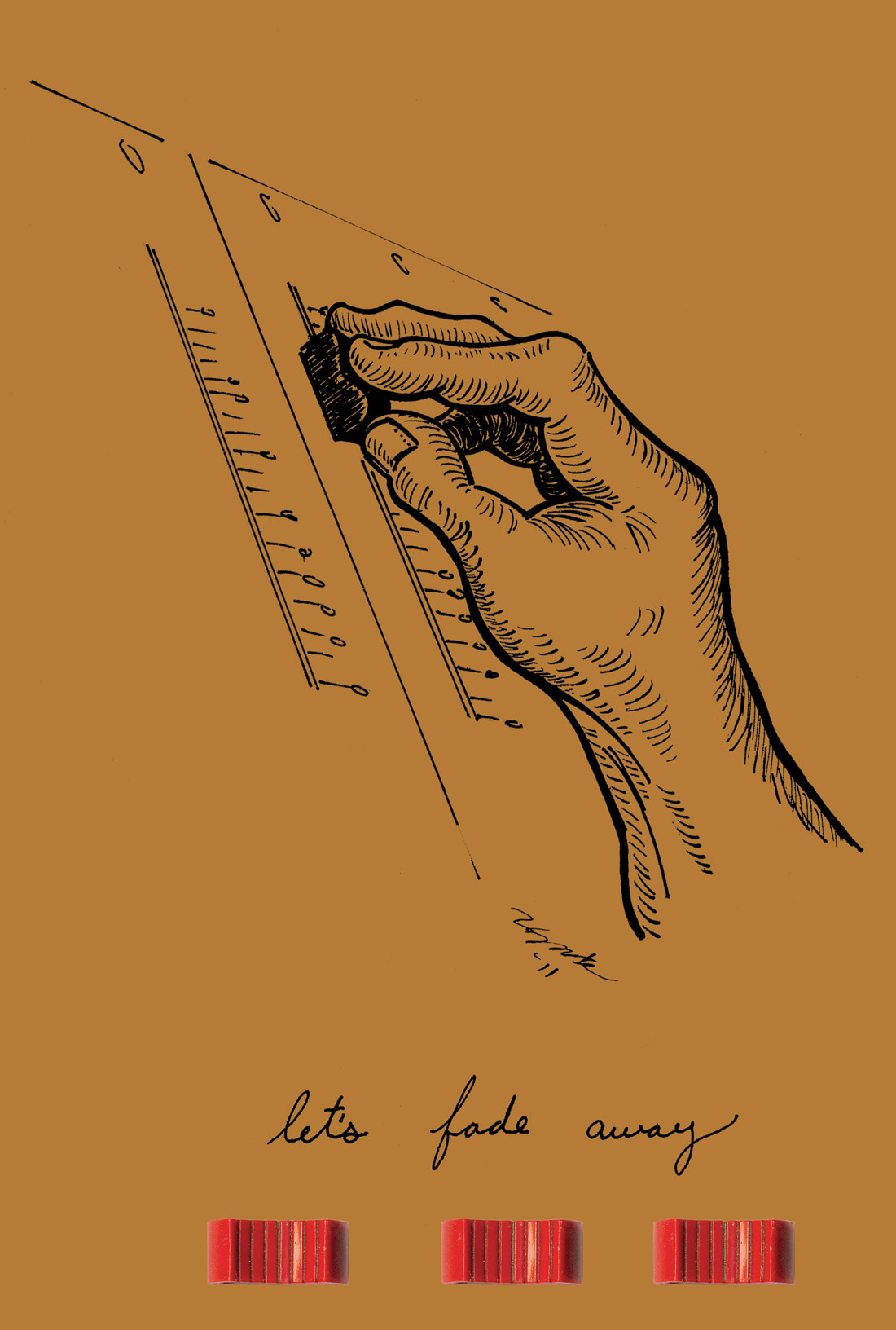

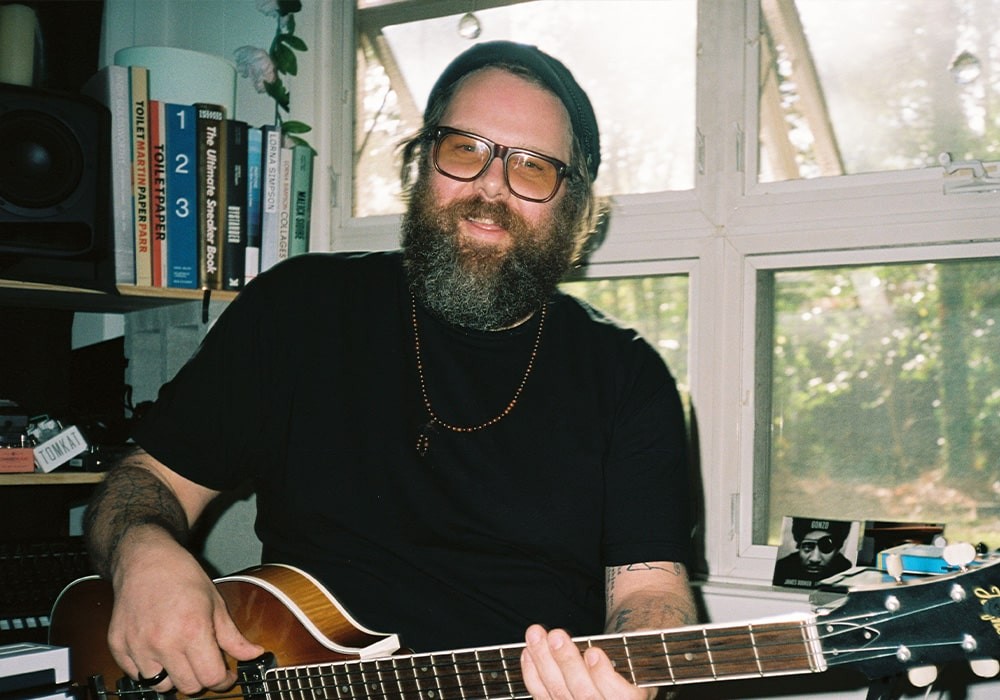
_display_horizontal.jpg)
